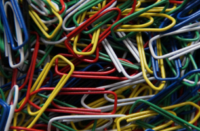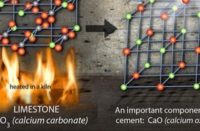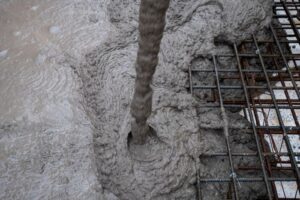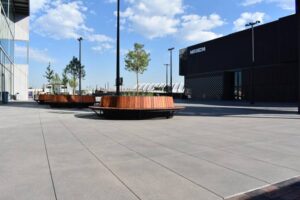Whether you realize it or not, the decorative concrete industry is firmly involved in the green building movement. Manufacturers are developing more water-based stains, sealers and color systems. Installers are offering low-VOC options to clients. Architects, designers and homeowners are better educated and are demanding green alternatives on their projects.
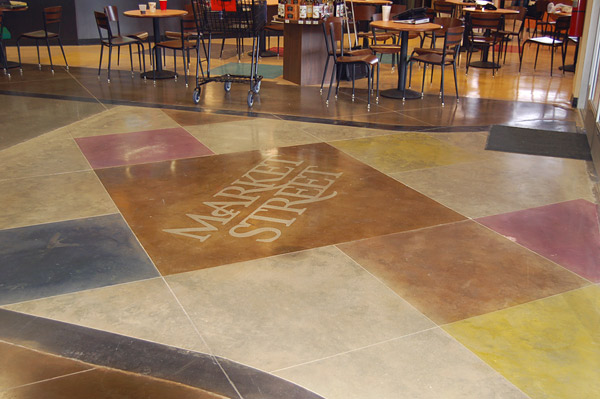
Certain municipalities are setting stricter controls on construction waste and/or the types of chemicals that can be used on projects. I have even heard of specific cases where release powder has been banned from projects because of the dust it creates. No matter your view on the subject, I think we can all agree that being better stewards of the land and air is important for all of us, as well as future generations.
The sustainability leader in the construction industry is the U.S. Green Building Council. While the USGBC has many facets, it’s best known for its Leadership in Energy and Environmental Design, or LEED, program. The LEED rating system sets guidelines for all types of construction projects. What most people don’t realize is that USGBC is not a government agency, and building according to the LEED green building rating system is 100 percent voluntary.
No financial incentives are given out for LEED-accredited project. In many cases LEED projects are more expensive to build, but the savings in energy and maintenance over the life of a LEED-accredited project often offset the initial higher upfront cost.
It is widely recognized that concrete is a sustainable building material and contributes toward achieving certification for most types of construction projects under the LEED rating system. But what is less recognized is how decorative concrete fits into the picture.
How does the LEED program work?
Before we can discuss how decorative concrete contributes toward LEED certification, we need to understand what LEED is and how the program works. Here’s how USGBC summarizes the program:
“LEED is an internationally recognized green building certification system, providing third-party verification that a building or community was designed and built using strategies aimed at improving performance across all the metrics that matter most: energy savings, water efficiency, CO2 emissions reduction, improved indoor environmental quality, and stewardship of resources and sensitivity to their impacts.”
This program was developed to provide constructors and operators a detailed roadmap for implementing real-world green building design as well as construction and operations solutions. LEED is flexible, and works throughout the life cycle of both commercial and residential buildings. It can be used for new construction as well as the retrofit of existing buildings.
Each program is based on five key credit categories, which differ depending on the type of project:
- Sustainable sites
- Water efficiency
- Energy and atmosphere
- Materials and resources
- Indoor environmental quality
Each key category comprises specific and measurable tasks for earning LEED credits. There are 100 possible points, with 40 points needed to qualify for the minimum LEED certification.
- Certified 40 – 49 points
- Silver 50 – 59 points
- Gold 60 – 79 points
- Platinum 80 points and above
The LEED certification process, and how decorative concrete plays a part, can be complex. This article is designed to provide an overview, and is in no way a complete guide to using decorative concrete to achieve LEED certification.
Obtaining LEED certification: Direct impact
There are three major categories where decorative concrete has a direct impact on obtaining LEED certification, with each worth one LEED point. For full guidelines, see USGBC’s LEED 2016 for New Construction and Major Renovations Rating System.
Sustainable Sites— Exterior
Credit 7.1: Heat Island Effect — Nonroof
A key goal of LEED is to minimize the impact of construction on surrounding exterior environments, communities and ecosystems. Heat and light are two of the biggest environmental pollutants when buildings are constructed. “Heat islands” are thermal gradient differences between developed and undeveloped areas. Under the Sustainable Sites section of LEED, Credit 7.1 addresses heat islands to minimize impacts on the environment through a combination of shade (manmade or trees), pervious surfaces, or reflective hardscape surfaces (driveways, parking areas, courtyards, sidewalks and other landscape surfaces) for at least 50 percent of the project’s hardscape surfaces. The materials used must have a solar reflective index (SRI) of 29 or greater.
Using light-colored concrete, achieved with integral color, color hardener, toppings or stains, helps meet the SRI of 29 or greater. The color can be used on standard concrete, stamped concrete or pervious concrete to meet the requirement. These practices are effective on both new and retrofit construction projects.
Indoor Environmental Quality— Interior
Credit 4.1: Low-Emitting Materials — Adhesives and Sealants
This credit’s intent is to reduce irritating or harmful indoor air contaminants by reducing the VOCs (volatile organic compounds) of adhesives and sealants used in construction. To qualify for this credit, the sealant must not exceed 250 g/l of VOC.
Most interior decorative concrete is sealed to protect and enhance it. Using architectural sealers and coatings is a great way to bring out the beauty of concrete and these decorative sealers can be clear or colored, opaque or translucent. Today, most decorative concrete sealer manufacturers offer both solvent- and water-based LEED-compliant products.
Indoor Environmental Quality — Interior
Credit 4.3: Low-Emitting Materials — Flooring Systems
This credit also reduces indoor air contaminants but it focuses on complete flooring systems like carpet, vinyl composition tile and concrete stains versus a single adhesive or sealant (as in Credit 4.1). The three major flooring systems that qualify for this credit are carpet with new-generation adhesives, low-emitting hard flooring surfaces (including vinyl, linoleum, laminate, wood, ceramic and rubber) and concrete stain, sealer and polished systems that meet low-VOC requirements.
Of all the LEED credits, this one is the most impactful for decorative concrete flooring systems. In fact, the credit requirements name low-VOC emitting “concrete stain and sealer finish systems” or “polished concrete” as options. Decorative concrete has a real advantage in helping achieve this LEED credit in that the concrete substrate is the final working floor without any additional hard surface material being applied.
Obtaining LEED certification: Indirect impact
There are seven categories where using concrete with decorative finishes or admixtures has an indirect impact on obtaining LEED certification, with each worth one LEED point. For full guidelines, see USGBC’s LEED 2016 for New Construction and Major Renovations Rating System.
These seven categories are:
- Credit 6.1: Storm Water Design – quality control
- Credit 1.1: Building Reuse – maintain 75 percent of existing walls, floors and roof
- Credit 1.2: Building Reuse – maintain 95 percent of existing walls, floors and roof
- Credit 4.1: Recycled Content – 10 percent (post-consumer and pre-consumer)
- Credit 4.2: Recycled Content – 20 percent (post-consumer and pre-consumer)
- Credit 5.1: Regional Materials – 10 percent extracted, processed and manufactured locally
- Credit 5.2: Regional Materials – 20 percent extracted, processed and manufactured locally
In many of these categories, decorative finishes such as cement-based toppings or qualifying stains and sealers are used to enhance or beautify existing parts of a structure, such as walls or floors. Decorative concrete can also indirectly earn points when fly ash or recycled aggregates are in the mix design, or the concrete or decorative additive is manufactured locally, contributing to the overall amount of regional material being used on the project.
I hope this article gives you a good idea of how the LEED green building rating system works and how decorative concrete impacts and helps contribute toward LEED certification. For those who use the LEED program or work regularly on LEED projects, USGBC offers various levels of accreditation depending on your area of interest. As the green movement grows, so will the demand for decorative concrete products, systems and processes that meet these requirements.
For more information about the LEED program and how to achieve certification, visit www.usgbc.org.
Editor’s note: Parts of this report first appeared in an article written by Chris Sullivan for Concrete Network.
